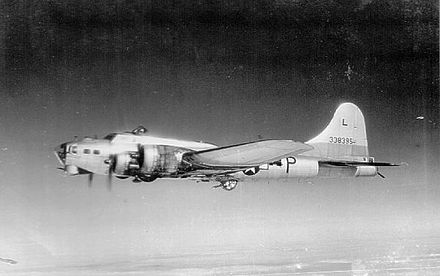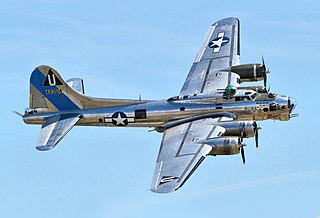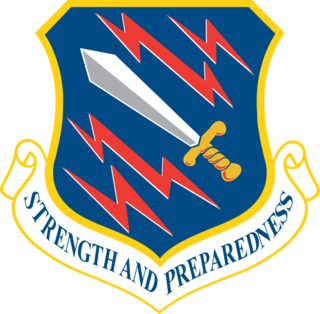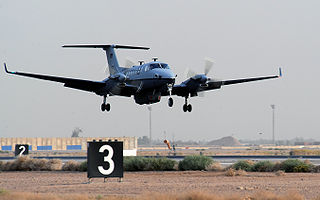| 962d Airborne Air Control Squadron | |
|---|---|
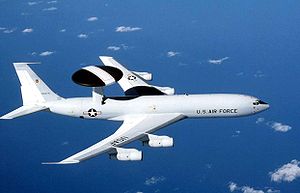 E-3 Sentry (AWACS) aircraft | |
| Active | 1943–1945; 1955–1969; 1986–present |
| Country | |
| Branch | |
| Role | Airborne Command and Control |
| Part of | Pacific Air Forces |
| Garrison/HQ | Elmendorf Air Force Base |
| Motto(s) | Eyes of the Eagle [1] |
| Engagements | European Theater of Operations [1] |
| Decorations | Air Force Outstanding Unit Award [1] |
| Insignia | |
| 962d Airborne Air Control Squadron emblem (approved 23 October 1995) [1] |  |
| 962 Airborne Warning & Control Sq emblem (approved 6 August 1986) [2] | 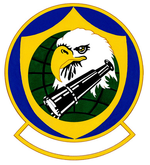 |
| Patch with 962d Airborne Early Warning and Control Squadron emblem (approved 14 February 1957) [2] |  |
The 962d Airborne Air Control Squadron is part of the 3rd Wing at Elmendorf Air Force Base, Alaska. It operates the E-3 Sentry aircraft conducting airborne command and control missions.

Elmendorf Air Force Base was a United States military facility in Anchorage, Alaska. Originally known as Elmendorf Field, it became Elmendorf Air Force Base after World War II. In 2010 it was amalgamated with nearby Fort Richardson to form Joint Base Elmendorf-Richardson.
Contents
- Mission
- History
- World War II
- Airborne warning and control
- Lineage
- Assignments
- Stations
- Aircraft
- References
- Notes
- Bibliography
The squadron's first predecessor is the 862d Bombardment Squadron, a heavy bomber unit that saw combat during World War II in the European Theater of Operations, where it participated in the strategic bombing campaign against Germany. Toward the end of the war, the squadron operated fighter aircraft, acting as a scouting force for bomber formations. After V-E Day, the squadon returned the United States and was inactivated.

A squadron in air force, army aviation, or naval aviation is a unit comprising a number of military aircraft and their aircrews, usually of the same type, typically with 12 to 24 aircraft, sometimes divided into three or four flights, depending on aircraft type and air force. Land based squadrons equipped with heavier type aircraft such as long-range bombers, or cargo aircraft, or air refueling tankers have around 12 aircraft as a typical authorization, while most land-based fighter equipped units have an authorized number of 18 to 24 aircraft.
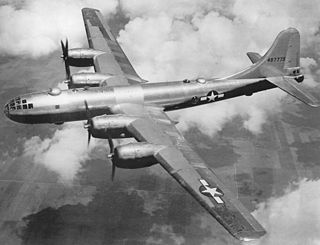
Heavy bombers are bomber aircraft capable of delivering the largest payload of air-to-ground weaponry and longest range of their era. Archetypal heavy bombers have therefore usually been among the largest and most powerful military aircraft at any point in time. In the second half of the 20th century, heavy bombers were largely superseded by strategic bombers, which were often smaller in size, but were capable of delivering nuclear weapons.

World War II, also known as the Second World War, was a global war that lasted from 1939 to 1945. The vast majority of the world's countries—including all the great powers—eventually formed two opposing military alliances: the Allies and the Axis. A state of total war emerged, directly involving more than 100 million people from over 30 countries. The major participants threw their entire economic, industrial, and scientific capabilities behind the war effort, blurring the distinction between civilian and military resources. World War II was the deadliest conflict in human history, marked by 50 to 85 million fatalities, most of whom were civilians in the Soviet Union and China. It included massacres, the genocide of the Holocaust, strategic bombing, premeditated death from starvation and disease, and the only use of nuclear weapons in war.
The second predecessor of the squadron was activated at Otis Air Force Base, Massachusetts as the 962d Airborne Early Warning and Control Squadron in 1955. It performed surveillance and warning missions off the Atlantic coast until inactivating in 1969. The two squadrons were consolidated into a single unit in 1985. The consolidated squadron was activated in Alaska the following year and has provided surveillance, detection and control of airpower since then.





